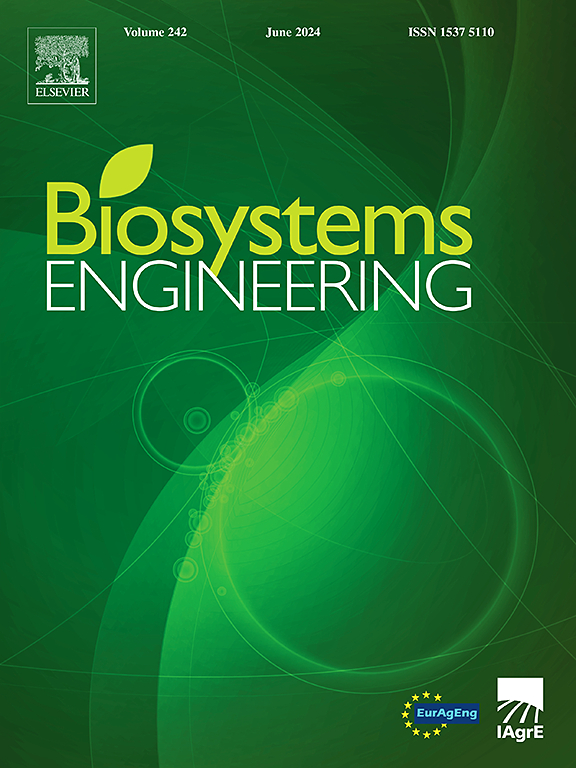葡萄束萎凋的评价:果实三维形态和颜色评价的研究进展
IF 4.4
1区 农林科学
Q1 AGRICULTURAL ENGINEERING
引用次数: 0
摘要
农业工业部门正在经历新一轮的创新浪潮,其驱动因素是旨在优化操作、提高产品质量和减少产量损失的货物检验设备。葡萄枯萎是一种广泛用于浓缩葡萄干和甜酒的浆果汁的方法。虽然这一过程改变了葡萄酒的特性,但它也带来了成本和风险,因为病原体感染会损害最终产品的质量。本研究提出了一种可靠的三维分析方法,用于评估葡萄的颜色和束状形态,以评估感染风险和干燥性能。在环境条件下对20个葡萄串进行干燥。颜色分析侧重于健康和腐烂束的颜色分布。三维数字复制品是通过两种方法生成的:i)摄影测量,ii)最近开发的人工智能模型。比较了两种方法输出的点云和网格,并直接测量了形态计量学特征,包括体积、表面积以及每个束的水平和垂直截面。发现串的水平部分和单个浆果的关键几何描述与串腐病风险分类相关。此外,与串紧密度相关的形态计量特征与干燥速度有关。建立了一个包含三维描述符的线性模型来估计枯萎期间的体重损失,R2值为0.98,相对误差为0.07。基于人工智能的技术产生了较低质量的葡萄重建模型,但选择的形态计量特征仍然有效。本文章由计算机程序翻译,如有差异,请以英文原文为准。
Assessment of grapevine bunch withering: advances in fruit 3D morphology and colour evaluation
The agro-industrial sector is experiencing a new wave of innovation driven by goods-inspecting devices designed to optimise operations, improve product quality, and reduce yield losses. Grape withering is widely used to concentrate berry juice for raisin and sweet wine production. While this process alters wine characteristics, it also introduces costs and risks, as pathogen infections can compromise the quality of the final product. This study presents a reliable three-dimensional analysis for assessing grape colour and bunch morphology to evaluate infection risk and drying performance. Twenty Vitis vinifera bunches were dried under environmental conditions. Colour analysis focused on the distribution of colours in healthy versus rotten bunches. Three-dimensional digital replicas were generated with two methods: i) photogrammetry, and ii) a recently developed artificial intelligence model. The point clouds and meshes output from the two approaches were compared, and morphometric traits were directly measured, including volume, surface area, and both horizontal and vertical sections for each bunch. Key geometrical descriptors of the bunch's horizontal sections and individual berries were found to be relevant for classifying the risk of bunch rot. Additionally, morphometric traits related to bunch compactness were linked to drying speed. A linear model incorporating three-dimensional descriptors was developed to estimate weight loss during withering, achieving an R2 value of 0.98 and a relative error of 0.07. The artificial intelligence-based technique produced lower-quality models for grape reconstruction, but the selected morphometric traits remained effective.
求助全文
通过发布文献求助,成功后即可免费获取论文全文。
去求助
来源期刊

Biosystems Engineering
农林科学-农业工程
CiteScore
10.60
自引率
7.80%
发文量
239
审稿时长
53 days
期刊介绍:
Biosystems Engineering publishes research in engineering and the physical sciences that represent advances in understanding or modelling of the performance of biological systems for sustainable developments in land use and the environment, agriculture and amenity, bioproduction processes and the food chain. The subject matter of the journal reflects the wide range and interdisciplinary nature of research in engineering for biological systems.
 求助内容:
求助内容: 应助结果提醒方式:
应助结果提醒方式:


